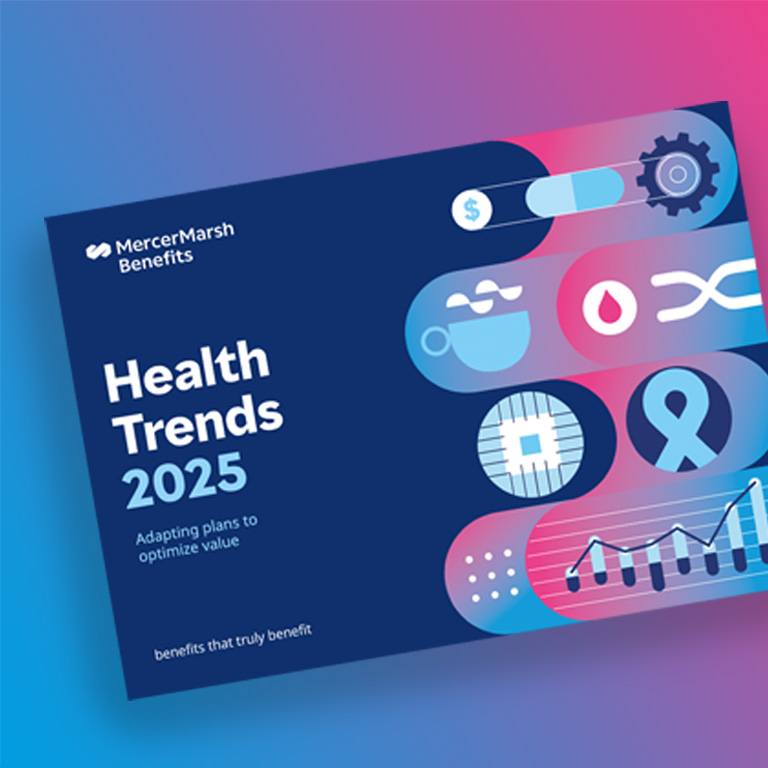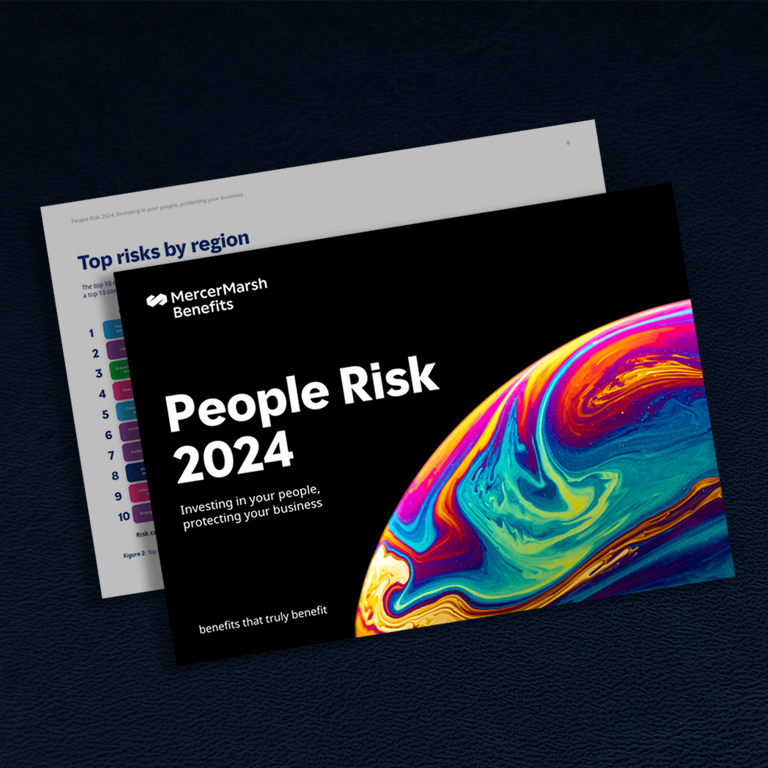
Alison Byrne
UK Workplace Health Consulting Team Leader, MMB
However, in a recent survey, HR and risk managers respectively ranked mental health 18th and 21st out of 25 risks, and workforce exhaustion 22nd out of 25. This is quite stunning considering that these are such pervasive issues, and it seems at odds with intersecting risks that did make it into the top 10, including catastrophic personal life events, changing nature of work and the environment.
Are companies viewing mental health as “last year’s problem”? Do they feel they have “checked the box” by adding an employee assistance program (EAP) or running an anti-stigma campaign?
This is part two of a BRINK interview with Alison Byrne and Dr. Ariel Almazan of Mercer Marsh Benefits about how mental health intersects with work and what better support for employees could look like. You can read part 1 here.
BRINK: The survey mentions that EAPs and anti-stigma campaigns aren’t providing enough support. How can companies do more — or perhaps do something new or unconventional — to help address their employees’ mental health challenges?
ALMAZAN: One of our concerns is that HR and risk leaders think they’ve successfully tackled mental health. We fear many businesses believe mental health challenges can be fully addressed through an EAP. However, while EAPs have traditionally been the cornerstone of an employer’s mental health strategy, new solutions are allowing organizations to focus on prevention, resilience and internal policies.
It is important for employers to understand the unique mental health needs of their population and the mental health risks inherent in how a business is run. Further, employers should equip managers, supervisors and colleagues with the skills to identify early warning signs of stress and mental health issues.
One piece of the puzzle is active management of psychosocial risks. OSHA-EU identifies psychosocial risks as those that arise from poor work design, organization and management, as well as a poor social context of work, and they may result in negative psychological, physical and social outcomes such as work-related stress, burnout or depression.
The new ISO 45003 guidelines provide organizations with information on how to manage psychological health and safety risks within an occupational health and safety framework. It addresses numerous ways in which a worker’s psychological health can be impacted, including organizational culture, poor leadership, excessive workload, and unproductive communication styles. Finally, it includes information on how to recognize the psychosocial hazards that can affect workers and offers examples of effective actions that can be taken to manage these.
Another important piece of the puzzle is insurance. Our Health on Demand research found that one in two employees say they would value insurance coverage to reduce the cost of mental health treatment. However, even though mental health was flagged as the second-biggest risk to employee health, benefit plan coverage is greatly lacking.
And even though the number of insurers providing mental health support has increased, there are still important gaps. Our 2022 MMB Health Trends research shows that although two-thirds of insurers globally say that they cover psychological and/or psychiatric counselling sessions, in practice two-thirds of those cover 10 sessions or less.
Employers also need to ensure that cost of care is not a barrier to providing insured benefits. This means providing early interventions and, where possible, creating a culture of health that addresses mental well-being before treatment is required.
This starts with a comprehensive workplace mental health strategy that acknowledges different needs and diverse populations. This may include peer/supervisor support and targeted solutions that supplement the employee assistance program, for example psychiatric, ongoing clinical support or substance abuse treatment that acknowledges different needs and diverse populations.
Our research also showed that nearly half (47%) of employees highly value targeted services for children, teenagers and parents to address youth mental health issues, and that 47% of employees highly value tools like mindfulness or resilience to better cope with pressure. In addition, employees who identify as LGBTQ+ are significantly more likely to value mental health benefits above all other benefits.
Employers who provide these interventions will be more likely to benefit from improvements in managed claims experience and in general business risk. Providing such solutions also helps with the important process of destigmatizing mental health in the workplace.
However, health care inequalities persist, meaning lower earners and people with part-time roles have the least access to benefits, despite needing the most support and help. Our research shows that 22% of employees in lower-income categories reported access to employer-facilitated mental health counselling services, compared to 32% of higher-earning colleagues. Many businesses structure compensation programs to attract and retain senior managers, but the consequence is that lower earners miss out. This leads to a poor level of engagement, high turnover, low productivity, and poor reputation.
Firms that want to achieve equity need to think about how plans and benefits can be redesigned to make sure all employees are protected and looked after. Employers must actively consider “flipping the pyramid” by auditing benefits plan eligibility requirements to ensure low-wage workers aren’t excluded.
BRINK: Reports of exhaustion and burnout having been rising — do you see big changes on the horizon for how much employees are expected to work? Numerous companies, for example, are experimenting with a four-day work week.
ALMAZAN: Our latest Global Talent Trends research found that 81% of employees report feeling at risk of burnout, a jump from 63% in 2019.
This is caused by a myriad of factors including: pressure on people to do more, the constant pace of change, technology transformation, poor work-life balance and worries and responsibilities outside of work, including caregiving duties.
C-suite members of companies planning enterprise-wide transformations view employee exhaustion as one of the top barriers to driving successful change.
People only have so much capacity to process and adapt to multiple changes at any one time. This makes looking after mental health a key priority for any business looking to thrive.
Mental health risk assessments are increasingly being used to determine which factors are undermining employee mental health. Taking this approach helps firms come up with strategic plans that tackle the root causes of stress and burnout.
BRINK: Do you have any advice for how colleagues might better support one another as they navigate difficult life events while also working?
BYRNE: HR and risk professionals must tackle the root causes of the problem. This work includes assessing the extent to which all levels of leadership, or even customers, could be undermining the mental health of employees.
Problems to look for include unhealthy working hours, isolation, and a toxic blame culture. Anti-stigma campaigns, manager training, and navigation tools that assess and direct members to the right level of care are all important.
Think about holistic well-being, including physical, social, financial and mental health. Encourage employees to use relevant, high-quality health and well-being resources and apps at their disposal. Pinpoint the greatest needs of your employees and ensure your digital solutions target those key issues. Ultimately, people must feel safe admitting when they need help, without fear of ridicule or retribution.

UK Workplace Health Consulting Team Leader, MMB

Wellness, Health & Claims Director, MMB

Article
10/13/2024

Report
04/23/2024